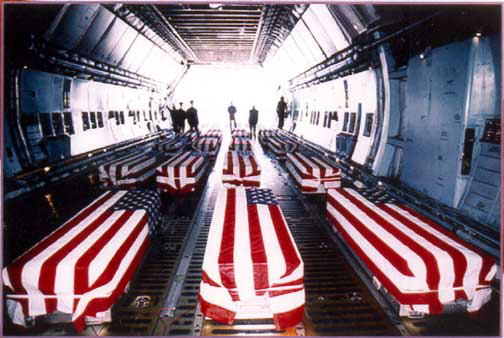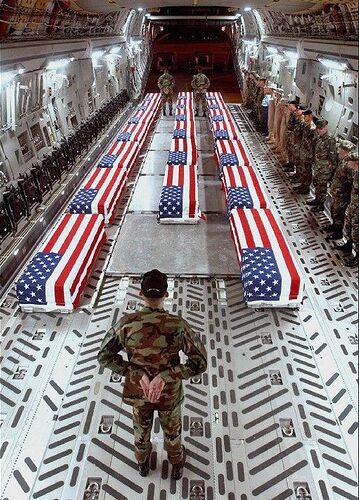That argument is fair, reasonable, and compelling.
But, against it, I’d ask: Have we become too squeamish about such things in our modern politically correct, touchy feely, new age Western world?
Nobody bothered to ask for the victims’ families’ consent before publishing pictures of dead and wounded soldiers up to Vietnam, so what’s changed since? Can anyone imagine what it must be like to be a member of the family of the captured unarmed Viet Cong executed by being shot in the head by the South Vietnamese police chief when that film is played, as it has been countless times?
What about the bodies of the American civilian contractors hanging off the bridge in Iraq? Are American civilian contractors’ families less deserving of the preservation of their and their dead relatives’ privacy than those of service people? Or did it just suit American propaganda purposes at the time to exploit those images to fuel hostility towards the enemy and support for a baseless war, while images of flag draped service people’s coffins are prohibited because it acts against those purposes?
Nor are the same restriction placed on rather more graphic images of the dead without coffins, never mind flags to conceal them, on the other side, so what’s so special about the American or other Coalition dead if it’s based on current concepts of human rights, of which privacy is just one current manifestation, when human rights obviously apply equally to all humans?
War is, obviously, anything but politically correct, touchy feely or new age, so it might be a good thing to have people’s noses rubbed in what is going on a lot more, as happened with Vietnam, instead of getting only those sanitised images which politically aware defence people choose to release. Which is precisely why the military don’t want a repeat of their famous loss of the TV war in Vietnam.
Censoring images of flag draped coffins is as much a government exploitation of war dead for political and propaganda purposes as using selected images to support the government’s war, in Iraq, Afghanistan or in any earlier war. The former is suppression, the latter expression, but the purpose is the same: to manipulate public opinion in ways favourable to government policies and actions.
It is absurd to prohibit publication of flag draped coffins when the same flag draped coffins can be exhibited in church during a funeral service and exposed to the public in a funeral procession as in the following sad instance, which I expect has been played out in many parts of America in recent years.
After the church service, the Patriot Guard riders escorted the funeral cortege through Athens to the cemetery, where the Fort Gordon funeral detail fired a three-volley salute. A bugler played “Taps,” and the soldiers folded up the American flag that draped Dressler’s coffin and presented it to Dressler’s young widow.
http://onlineathens.com/stories/061507/news_20070615046.shtml
The only difference is that local public views of flag draped coffins in isolated instances dotted around the country is a lot less influential on national public opinion than having them splashed across the main newspapers and news services.
Anyway, that’s my view from down here.
And if I’ve unintentionally trodden on American toes about the US flag in such circumstances due to my lack of understanding of Americans’ sentiments about it, I apologise.



